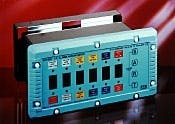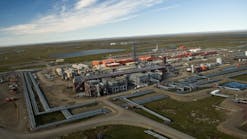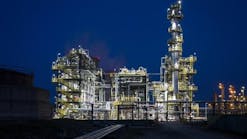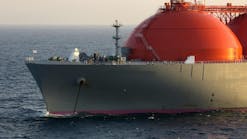Software aids refinery safety inspection
New Lucis image-processing software, available on a disk for PCs, can help enhance digital images used in utility safety inspections. It's suited for safety inspection of refineries, distribution pipelines, and valves.
Based on a patented algorithm called differential hysteresis processing, the software extracts and displays contrast patterns based on variations in luminance.
Source: Image Content Technology LLC, 185 Main St., Suite 211, New Britain, CT 06051.
New annunciator for hazardous areas
The new LN1000 annunciator monitors and displays alarm signals in a Division 1 hazardous location.
The unit's low power requirement suits it for intrinsic safety; and, a single standard IS interface is all that is needed to energize as many as 32 alarm channels. The unit is now approved by CSA for use in US (UL 913) and Canada (CSA C22.2 No: 157-92 & 142-M1987) when installed in Class I, Division 1 hazardous locations. The annunciator is also certified by BASEEFA to the CENELEC standard for use in Europe.
The unit displays visual alarm status through a combination of LCDs and LEDs, including first-up information. Each channel can be programmed to follow the ISA alarm sequences. From the information displayed, the operator can acknowledge the alarm via a built-in function key, and subsequently correct the fault that has caused this condition.
Explosionproof enclosures or purge cabinets are not required, which helps simplify the installation and permits live maintenance. A complete annunciation system can be implemented by adding ancillary devices such as intrinsically safe audible and visual alarms.
Source: Exloc Corp., Box 1100, Manassas, VA 20108.
In-line flowmeter
The new FlexMASSter ST98L in-line flowmeter is suited for low flow gas measurement.
Its advanced thermal mass sensing element promises precision measurement over a wide flow range. For example, it measures airflows of 0.0062-1,850 scfm to an accuracy of
The ST98L supports chemical processing, natural gas, or methane monitoring.
Its non-moving parts sensing element consists of two all-welded 316 stainless steel thermowells that protect resistance temperature detectors (RTDs). One RTD is heated relative to the reference RTD, and the temperature difference between the two is related to the process mass flow rate. The standard in-line flow tube comes in a 1-in. diameter tube or 1, 1.5, or 2-in. schedule 40 pipe (male NPT process connection). Optional flange process connections are available.
A new package design allows easy access to the unit's termination points and communication ports. For field programmability, an RS-232C serial port interfaces with this firm's FC88 communicator, with a remote computer, or with any ASCII terminal. The electronics accept universal ac (85-260 v) or 24 v dc input power. Standard outputs include 4-20 ma, 0-5 v dc, or 0-10 v dc, which are also field programmable.
Source: Fluid Components International, 1755 La Costa Meadows Drive, San Marcos, CA 92069.



